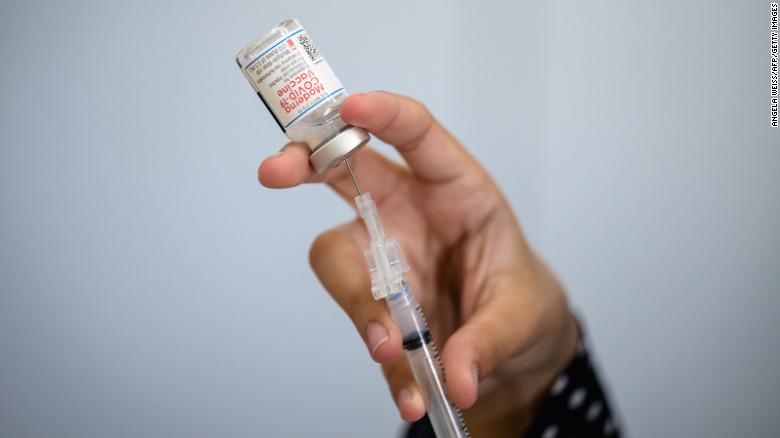
(CNN)Poll of the week: A new Kaiser Family Foundation poll finds that 64% of American adults have gotten or want a Covid-19 vaccine as soon as possible, 15% will wait and see and 19% will either definitely not get one or will only get one if it is required.
This data matches up with other polling that suggests that roughly 60% to 65% of American adults want a shot or have had one, 15% to 20% will wait and see and 20% don't want one.
What's the point: The number of new Americans who have received a first dose of a Covid-19 vaccine has been
tumbling in recent weeks, as the people who really want a vaccine have been able to get one. The need now is to get those who are hesitating (i.e. the wait and see group) to get past their hesitation, as the 20% of vaccine resisters have been steady in their opposition.
The question is how to get it done. A lot of attention has been
spent on Republicans being the problem, leading to calls for former President Donald Trump to
address the group.
A look at the data reveals that the vaccine hesitant group, however, are not big Trump lovers. They're actually likely not to be Republican. Instead, many of them are people who are detached from the political process and didn't vote for either major candidate in 2020.
The most recent Kaiser poll helps illustrate that the vaccine hesitant group doesn't really lean Republican. Just 20% of the group called themselves Republican with an additional 19% being independents who leaned Republican. The clear majority (61%) were not Republicans (41% said they were Democrats or Democratic leaning independents and 20% were either pure independents or undesignated).
This is very much unlike the vaccine resistant group, of whom 55% are Republican or Republican leaning independents. Just 21% of that group are Democrats or Democratic leaning independents.
The Kaiser poll points to a larger problem: There isn't going to be a single ideological message that appeals to a majority of the vaccine hesitant group. They're of all political stripes.
The March Kaiser Family Foundation
poll shows us another issue: Traditional political type messages may not work on them either. That poll asked respondents whether they were registered to vote and for whom they voted for in the 2020 election.
The overwhelming plurality (48%) were people who either didn't vote, voted third party or weren't willing to disclose who they cast a ballot for. The rest were split 31% for Trump and 20% for President Joe Biden.
The poll gets at the fact that the efforts to vaccinate the population isn't a political campaign to reel in voters. If we use traditional election tactics to reach the vaccine hesitant group, we're likely to lose.
Just 62% of the voting age population cast a ballot
in 2020, even though the election featured the highest turnout in a long time. The number of adults who didn't vote was larger than the number of people who voted for either Biden or Trump. The wait-and-see category is disproportionately made up of this group.
People who are not registered to vote are among the most likely to say they're in the wait-and-see camp. In a
Monmouth University poll last month, 34% of adults who were not registered to vote said they wanted to "see how it goes" (i.e. wait-and-see) before getting a vaccine. That was significantly higher than the 10% of registered voters who said the same.
Another way to look at this is that most political campaigns are focused on older people because they make up the lionshare of habitual voters.
The people who are vaccine hesitant are not old. The clear majority (about 60% to 70%, depending on the poll) are younger than 50. These are largely not going to be people who watch cable news.
We have to be able to convince them that they should get the vaccine for themselves and their neighbors, even though
the mortality rate for a lot of them is lower than it is for older people.
According to the polling, there are a lot of different ways we might be able to do that, such as making it easier to get the vaccine and confronting falsehoods about the vaccine.
The good news is that people, especially younger people, are far more likely to get a vaccine when they know someone else who has gotten one. If professionals can get a single person in a social circle to get a vaccine, it will make their overall job of getting people vaccinated that much easier.